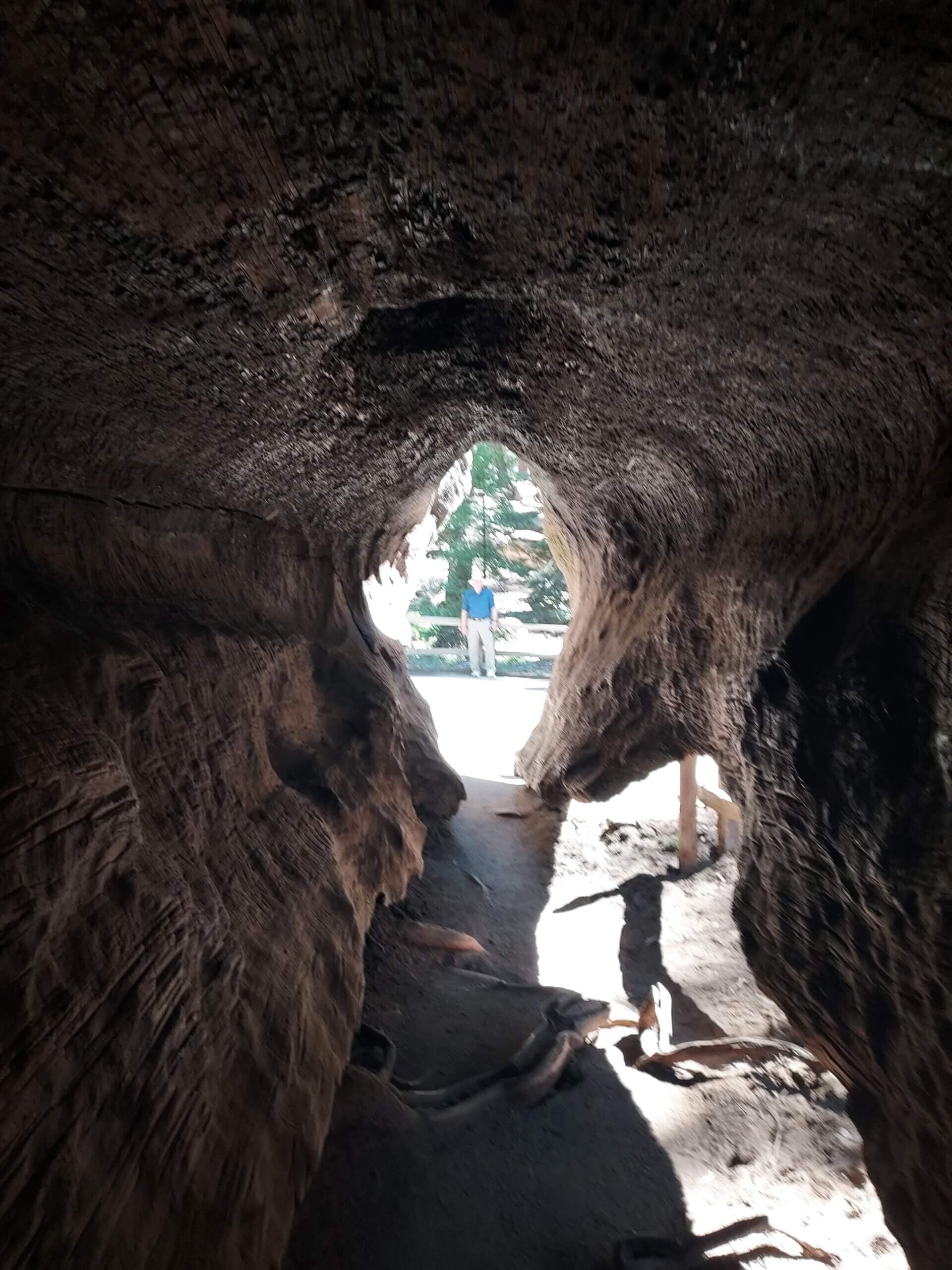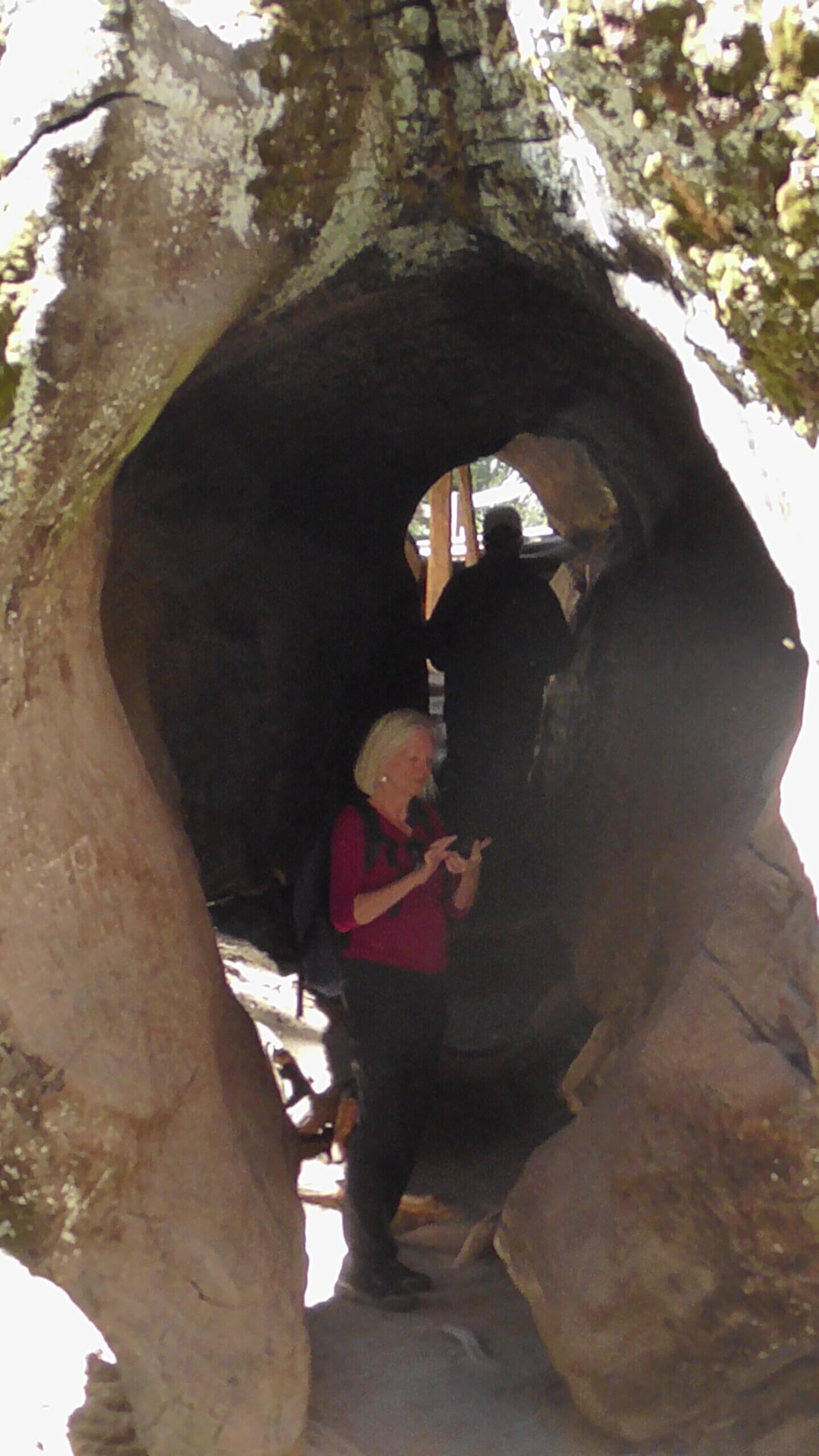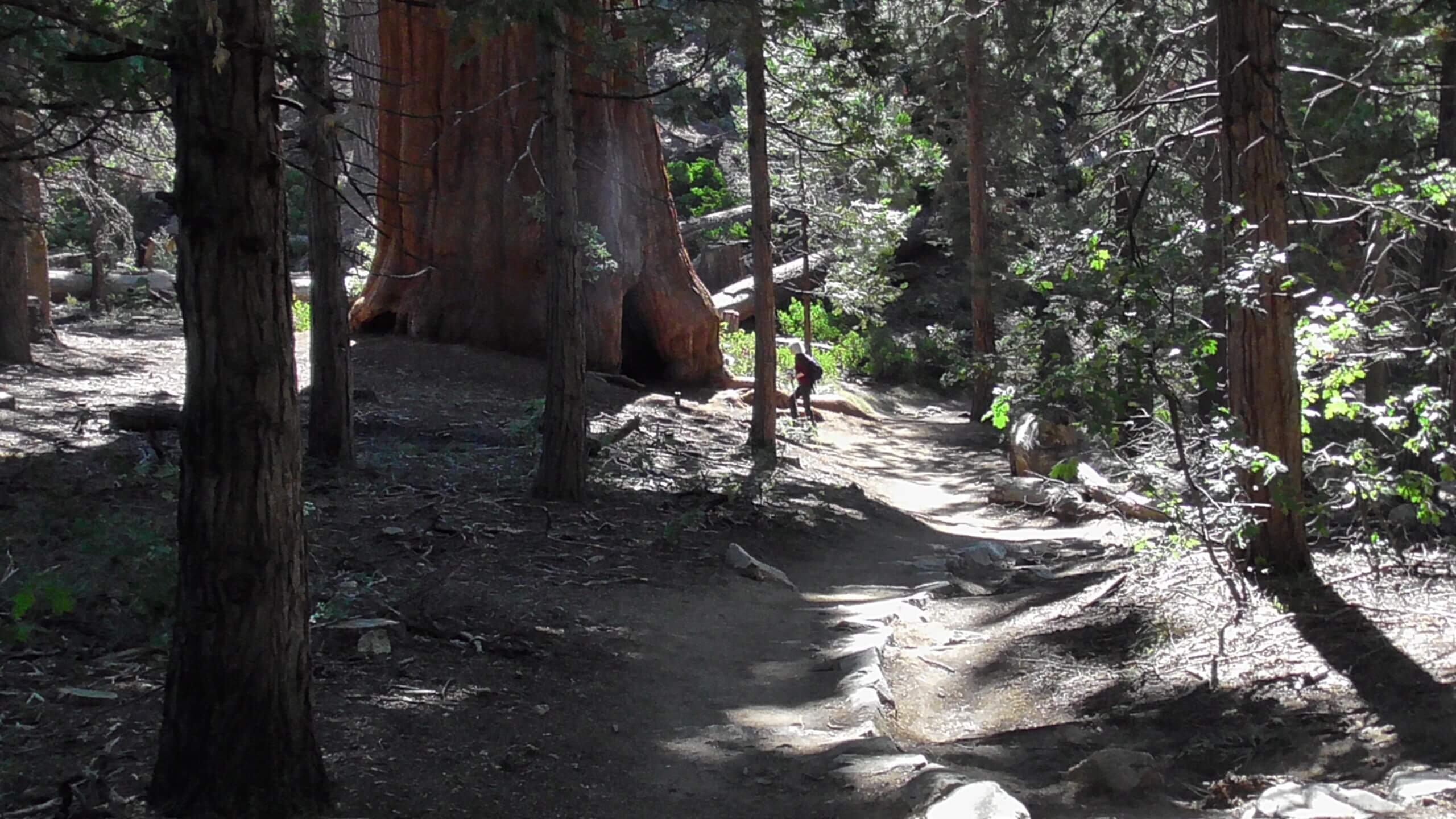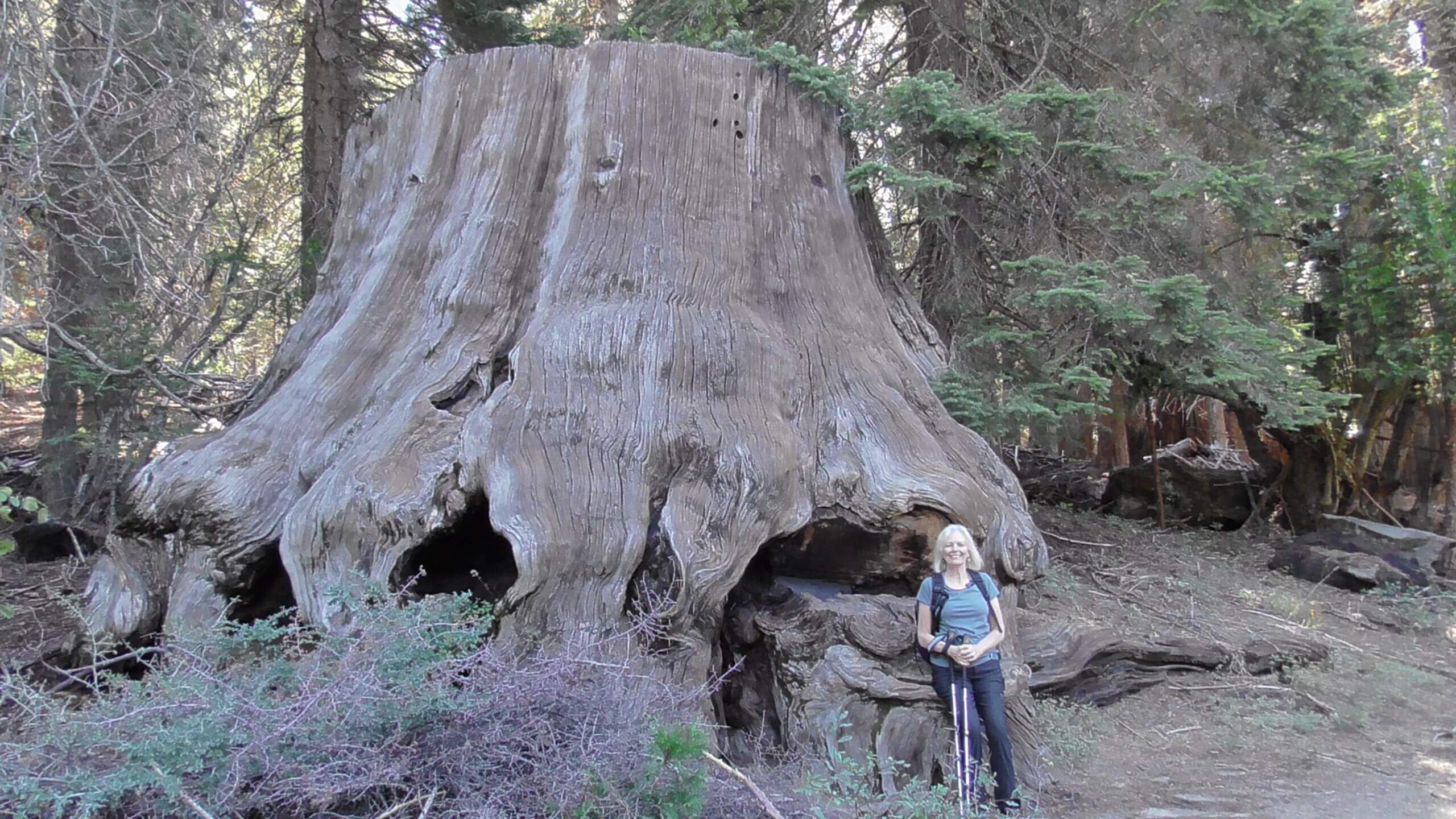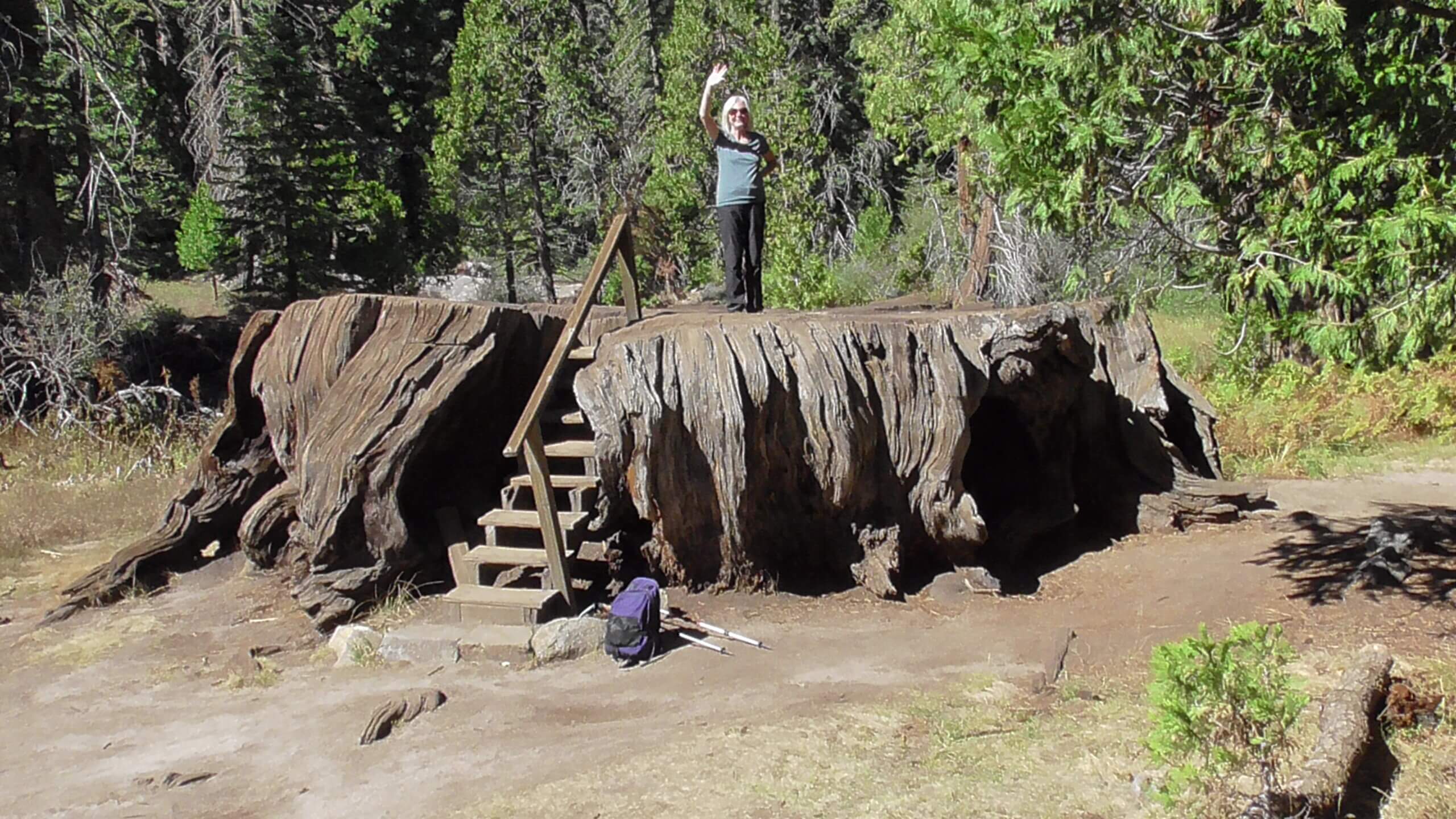Logging of Sequoias
Many of the early discoverers of the sequoia groves envisioned vast returns from logging these giants of the forest. The more accessible groves were promptly appropriated by lumber companies for private gain, and many giant sequoia areas passed into private hands along with the fine forests of pine that surrounded them. Logging began as early as 1862 and reached its peak from 1880 to 1900 when many groves of giant sequoia were cut. However, the vast size of the trees (it might take two weeks to chop down one tree by hand), and the difficulty of bringing the logs out of the rough topography reduced their profitability. After they fell they had to be cut into sections, split and hauled out with teams of oxen or horses after roads were built.
Even in John Muir’s day, it was quickly realized that sequoias had little timber value, due to the brittle nature of the wood and its propensity to shatter upon hitting the ground when felled. Many were only good for fence posts (they were rot resistant) or for burning in power plants.
One area of Kings Canyon has a big stumps trail which has stumps that are 130 years old and still standing. One stump was named after Mark Twain and sections were sent at the time to New York City and London. A cross section of this tree still resides in the American Museum of Natural History in New York City. Few people had seen the sequoias in 1891 and many did not believe they were really that big. Fifty people could stand on the Mark Twain stump which had a diameter of 16 feet. General Sherman has a diameter of 25 feet. You do the math.
